The iPhone 13 is already a reality after dozens of leaks since the iPhone 12 arrived on the market. The historical rival of the Apple phone has always been the Galaxy S of the same generation, which in this case corresponds to the Galaxy S21. Beyond the philosophy of each brand, the fact is that both phones share specifications due to the limitations of the technology itself. The question is this: what are the differences between the real iPhone 13 vs Samsung Galaxy S21? Let’s see.
iPhone 13 vs Galaxy S21 Datasheet
| iPhone 13 | Galaxy S21 | |
|---|---|---|
| Screen | 6.1 inches with OLED technology, Super Retina XDR resolution, and 60 Hz refresh rate | 6.2 inches with Dynamic AMOLED X2 technology, Full HD + resolution, and 120 Hz refresh rate |
| Main chamber | – Main sensor with 12-megapixel wide-angle lens and f / 1.6 focal aperture – Secondary sensor with 12-megapixel ultra-wide-angle lens and f / 2.4 focal aperture | – Main sensor with 12-megapixel wide-angle lens, f / 1.8 focal aperture, and 1.8 um pixels – Secondary sensor with 12-megapixel ultra-wide-angle lens, f / 2.2 focal aperture, and 1.4um pixels – Tertiary sensor with a 64-megapixel telephoto lens, f / 2.0 focal aperture, and 0.8 um pixels |
| Camera takes selfies | 12-megapixel main sensor and f / 2.2 focal aperture | 10-megapixel main sensor, f / 2.2 focal aperture, and 1.22 um pixels |
| Internal memory | 128, 256, and 512 GB | 128 and 256 GB of type UFS 3.1 |
| Extension | Not available | Via micro SD cards up to 1 TB |
| Processor and RAM | Apple A15 Bionic 5 nanometer with 6 cores | Exynos 2100 5 nanometer with eight cores 8 GB of RAM |
| 3,240 mAh with 18 W fast charging and 15 W wireless charging | 4,000 mAh with 25 W fast charging, wireless charging, and reversible wireless charging | |
| OS | iOS 15 | Android 11 under One UI 3.0 |
| Connections | 5G SA and NSA, 4G LTE, WiFi 6, Bluetooth 5.0, NFC for mobile payments, GPS, eSIM, and Lightning port | 5G SA and NSA, 4G LTE, WiFi 6, Bluetooth 5.1, NFC for mobile payments, Dual GPS, eSIM, and USB Type-C port under the USB 3.1 standard |
| SIM | nano-SIM and eSIM | nano-SIM |
| Design | Metal and glass Colors: white, black, blue, red and pink | Polycarbonate and aluminum frames Colors: black, purple, white, and blue |
| Dimensions | 146.7 x 71.5 x 7.6 and 173 grams | 151.7 x 71.2 x 7.9 millimeters and 172 grams |
| Featured Features | Stereo sound signed by AKG, Dolby Atmos, and Dolby Vision certification, hardware facial recognition, IP68 water, and dust resistance | Stereo sound signed by AKG, Dolby Atmos certification, on-screen fingerprint sensor with ultrasound technology, compatibility with Samsung Dex, facial recognition through software, IP68 water, and dust resistance |
| Release date | Available | Available |
| Price | From $799 | From $522 |
Design: The Construction Materials Make the Difference
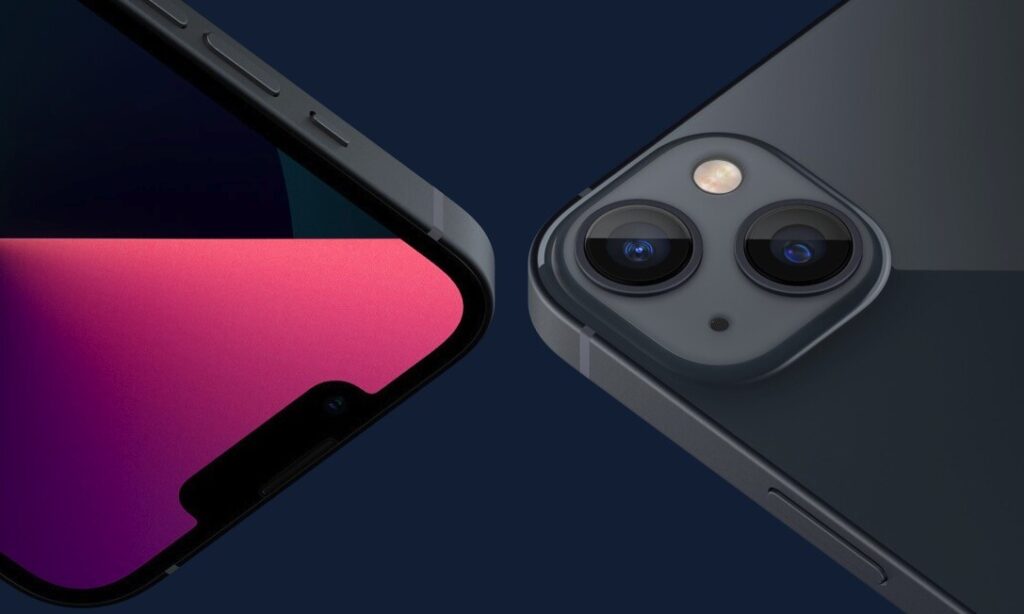
In terms of dimensions, the two handsets have a striking resemblance. Overall, the iPhone 13 is slightly more compact, probably because of its screen, which is more compact (6.1 inches compared to the Galaxy’s 6.2). The weight of both is practically the same: 173 and 172 grams. The most curious thing is that the Apple phone has more solid materials: glass on the back and metal on the edges. The Samsung Galaxy S21, on the other hand, opts for a polycarbonate casing, which helps to improve its resistance to falls and scratches, as it has a higher percentage of shock absorption.
As for the rest of the design details, both are protected against water and dust thanks to IP68 certification. Likewise, the Galaxy S21 has Corning Gorilla Glass Victus protection on its screen, while Apple opts for proprietary development.
The Screen is Differentiated by the Refresh Rate
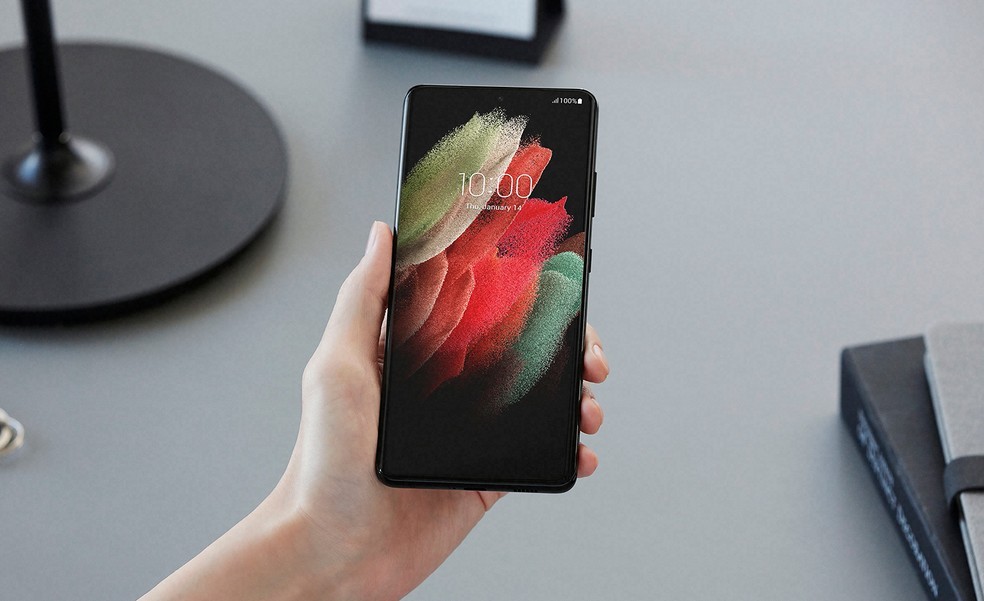
On paper, the main and most striking difference between the Galaxy S21 and the iPhone 13 is the refresh rate. As expected from the outset, Apple has opted for 60 Hz panels, reserving ProMotion technology and 120 Hz for the Pro range. Samsung, on the other hand, opted for panels with 120 Hz frequency, which has an impact on the user experience when interacting with the screen.
The other technical aspects of the display are more or less similar. The resolution of the panels comes to be similar to Full HD+, with pixel densities above 400 pixels per inch. The maximum brightness of both panels is 1,200 and 1,300 nits in HDR-compatible content. The iPhone 13 can play content compatible with Dolby Vision, something that few devices can boast of today. Moreover, both are DCI-P3 certified.
The iPhone Has the Most Powerful Processor in the Mobile Industry
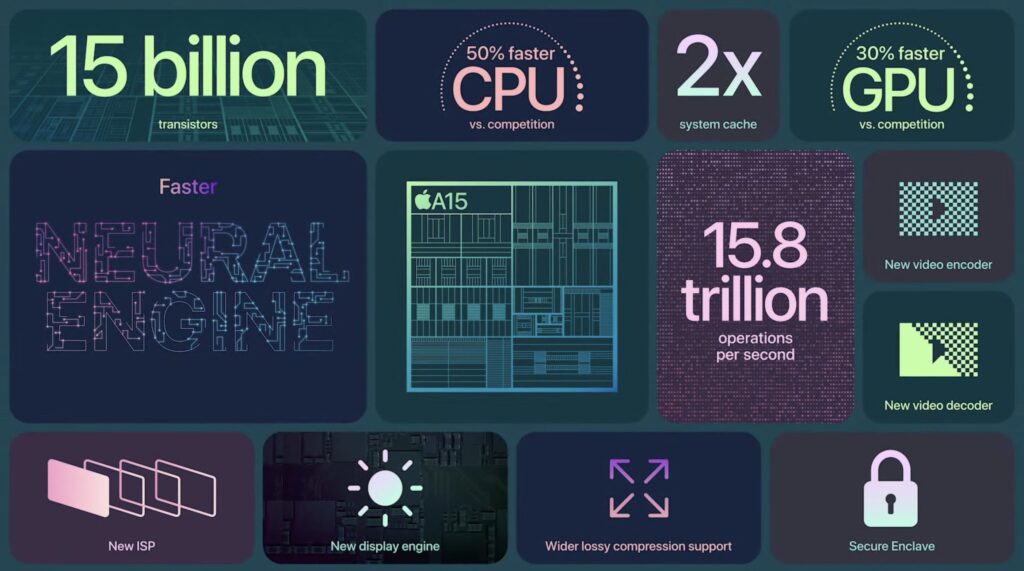
It is a fact, Apple designs the best mobile processors in the world and it was not going to be less with the latest generation of smartphones of the company. The Apple A15 Bionic that we find in the iPhone 13 is the second most powerful processor today, surpassed only by the same model that we find in the Pro models, with more GPU cores. On the other hand, the amount of RAM available is 4 GB, which may limit the number of applications we can run at the same time.
As for the Galaxy S21, the phone makes use of the latest model of the company, the Exynos 2100 in the variants that are marketed in our country. Compared to Apple’s chip, the processor performs about 40% less according to Geekbench tests. The good news is that the phone has 8 GB of RAM, twice as much memory as its rival. On the other hand, both feature 128GB and 256GB storage options, plus 512GB in the iPhone 13.
More Cameras At Samsung, Better Cameras At Apple
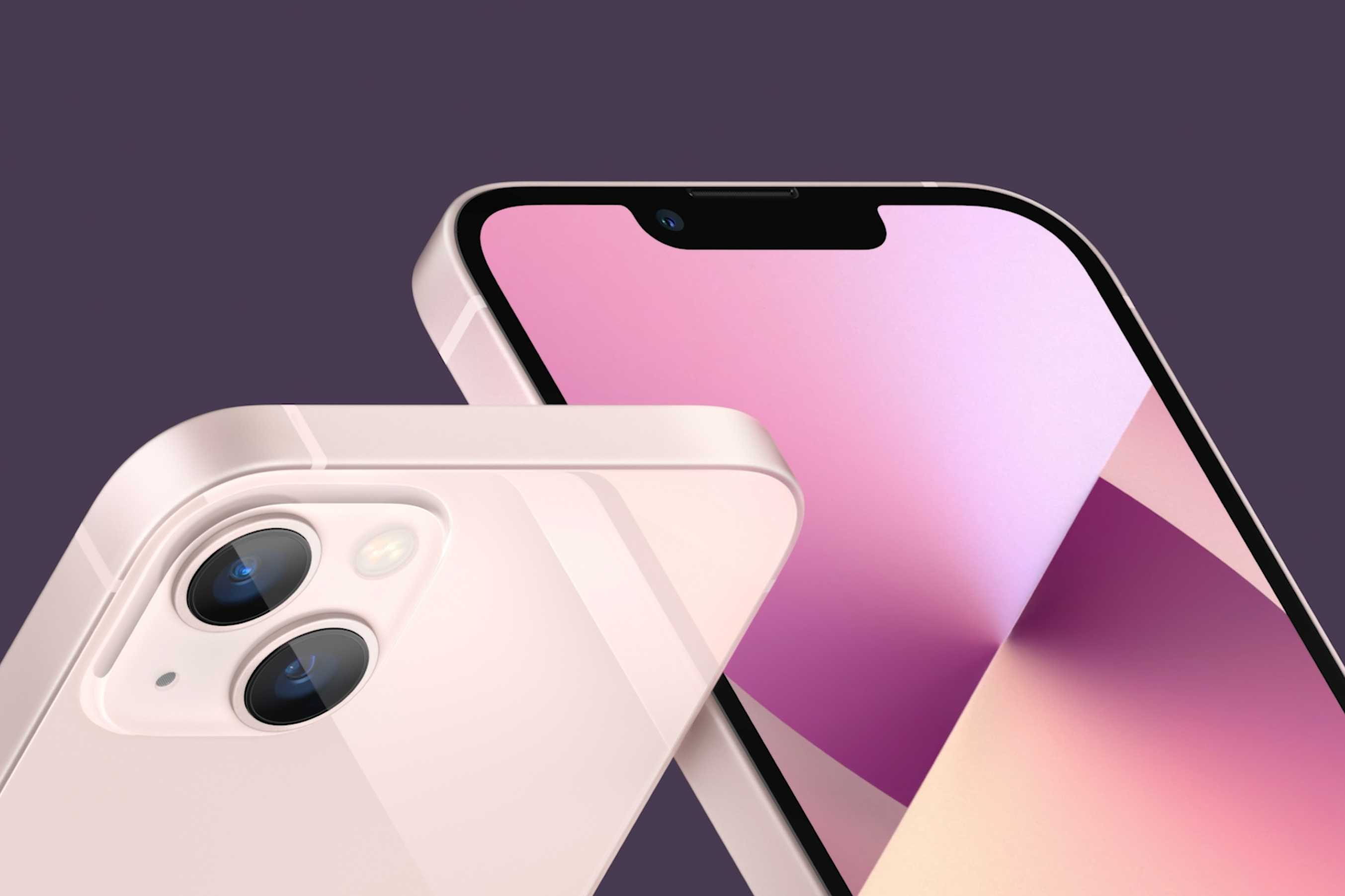
iPhone cameras always set a precedent in their generation. In this case, we find the same sensors that mounted the iPhone 12 Pro Max, except for the telephoto sensor, which disappears in this new version. We are talking about two 12-megapixel cameras with f/1.6 and f/2.4 focal aperture, with optical stabilization in the first and electronic in the second and wide-angle and ultra-wide-angle lenses. Of note is the ability to record videos in 4K at 60 FPS with Dolby Vision support, something that no other phone, beyond those of Apple, can achieve to date.
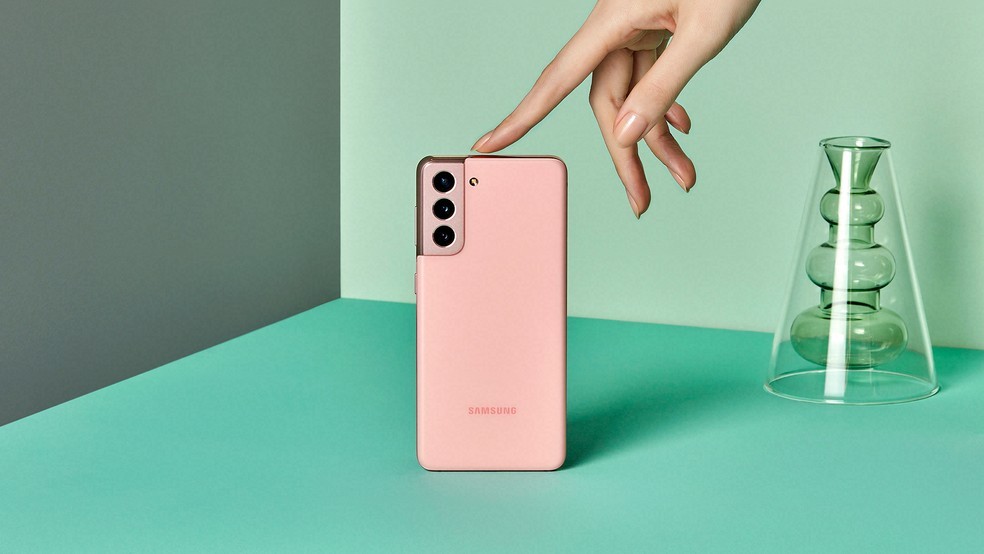
As for the Galaxy S21, the phone mimics Apple’s philosophy with two 12-megapixel sensors, wide-angle and ultra-wide-angle lenses, and f/1.8 and f/2.2 apertures, plus optical stabilization on the first. The third and last sensor has 64 megapixels, a telephoto lens, and the ability to perform optical zoom of three times and a digital zoom of thirty times. As far as video recording is concerned, the phone is capable of recording in 8K quality at 24 frames per second, something anecdotal considering the presence of panels with such resolution. The good news is that the phone is capable of playing such content at native resolution, although the panel resolution does not match the size.
And what about the front cameras? 12 and 10 megapixels, with an f/2.2 focal aperture on both sensors. Of the iPhone 13, it is worth noting the ability to record video in the same quality as the main sensor: 4K at 60 FPS. The front camera of the iPhone 13 also takes advantage of its unlocking system, based on the ToF, 3D, and infrared sensors incorporated in the notch. Samsung also bets on a locking system, although in this case, it is software-based, so it is less secure. Fortunately, there is an ultrasonic fingerprint sensor on its display.
Samsung Dex: Making Sense of Processor Power
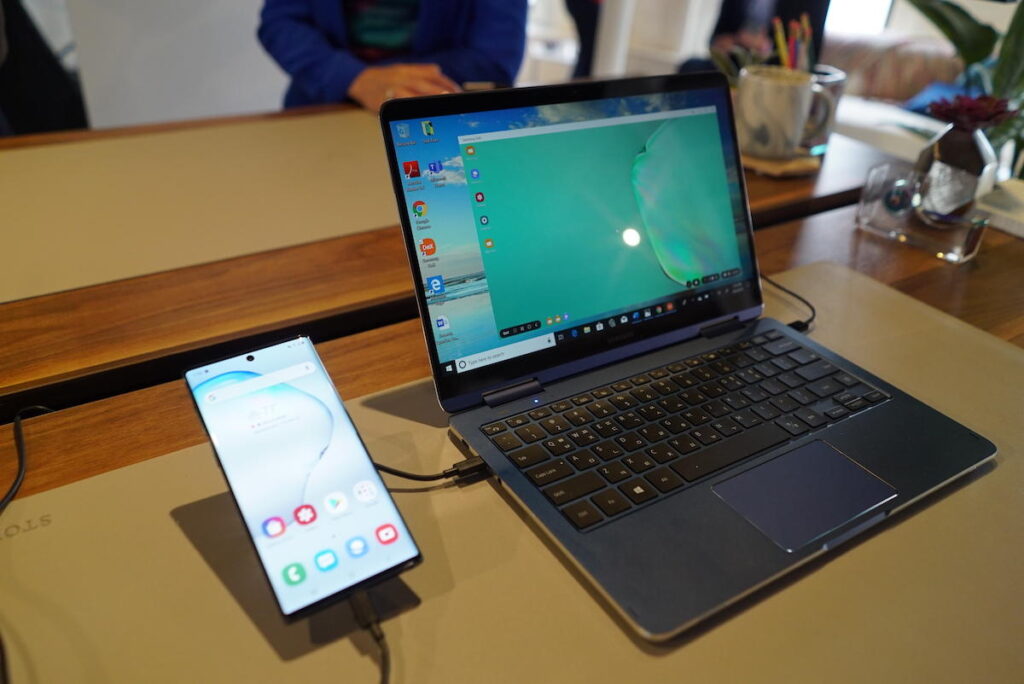
If there is a feature that goes unnoticed in the Samsung Galaxy is Samsung Dex, a function that allows us to turn our mobile device into a complete desktop system similar to Windows, with resizable windows and interfaces. In this case, we can make use of a USB Type-C to HDMI adapter to connect the device to an external monitor or the WiFi connection and Screenmirror technology to send content to the TV. In this way, you can use the device as if it were a computer. Needless to say, Apple has not developed any desktop system at the time of writing, not to mention that the limitations of the Lightning port do not allow content to be sent dynamically.
Autonomy and Charging: Disparate Figures but Close Due to the Optimization
Apple never gives official figures regarding its batteries and certain technical specifications. In this case, the company has limited itself to providing figures in real use scenarios: 19 hours of video playback, 15 hours of streaming video playback, and 75 hours of audio playback. In short, figures are quite far from what the Samsung Galaxy S21 gets in the tests we were able to perform after several weeks, although we will have to test the iPhone 13 to see if what the brand has promised is true. What is a fact is that the processor and screen are more efficient.
Taking a look at the figures, we find capacities of 3,240 and 4,000 mAh respectively. As for charging, the iPhone 13 supports only 15 W chargers in wired charging and 7.5 in induction. The Galaxy S21, on the other hand, supports 25 W wired, 15 W wireless, and 4.5 W reverse charging. In this regard, Samsung takes the cake, although neither is a panacea.
Pricing and Availability of the iPhone 13 vs Samsung Galaxy S21
It is well known that Samsung phones tend to be devalued shortly after they are introduced. And even though the Galaxy S21 was initially presented for $799, the truth is that today it can be seen on Amazon for $522.
The price of the iPhone, on the other hand, tends to vary very little, although at the date of presentation it is $799.
This post may contain affiliate links, which means that I may receive a commission if you make a purchase using these links. As an Amazon Associate, I earn from qualifying purchases.

